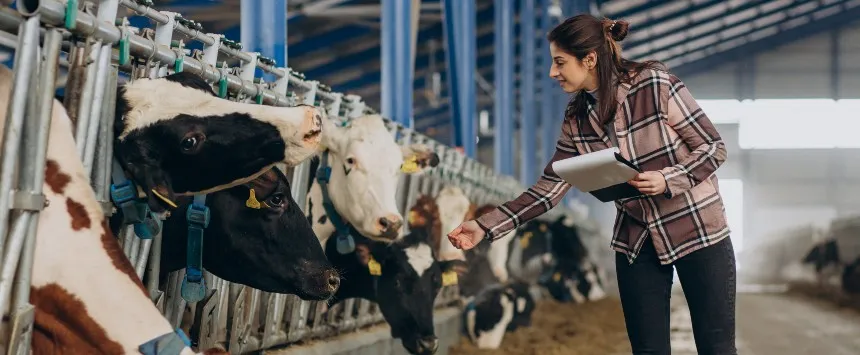Autumn has arrived and temperatures have started to decrease, after a wet summer. Farmers will be starting to discuss housing for the winter and their health plan for the coming months. Parasites have been known to cause serious headaches for farmers once the herd have been housed with liver fluke and lungworm being the initial headache with lice and mites following shortly after.
There are many studies to give farmers the heads up on how best to manage these paracites throughout the winter months. Winter housing is one of the most expensive periods for farmers throughout Ireland so that is why McCabe Feeds are here to assist you with some of the top tips and products available instore and online to help with the effective treatment of each type of parasite.
Key Information to remember before you dose:
- Ensure you are selecting the correct product for the parasite you are treating
- Weigh cattle prior to dosing to ensure adequate and approraite dosage is used to prevent over dosing or under dosing
- Ensure correct techique and equipment is used to get best results
- Switch up the products you use on an ongoing basis to prevent resistance to certain products. Ensure the active ingredient is also different and not just the product name
- Most products cover various parasites- which can be the easy option and farmers tend to see this as an all in one appraoch but be sure to not dose cattle for the sake of it as this will lead to resistance. Know before you Dose!!
Internal Parisites
Lungworm, Stomach worm and Tape worm are commonly found on farms nationwide during the housing season. These can all have a negative effect on animal performance and in severe cases can lead to animal losses.
Lungworm
Lungworm in particular is caused by a parasitic larvae which is ingested by cattle off the grass during the grazing season.
Alternative names for Lungworm- Hoose or Husk
Key indicators of Lungworm:
- Respiratory issues
- Coughing bouts/ Panting
- Increased breathing rate
Key note: Dung samples are not usually helpful to detect Lungworm
Recommended Dose for Lungworm in Cattle:
Stomach Worm
Stomach worm are found in the animals gastoinstinal tract.
Alternative names for Stomach Worm- Nematode or Roundworm
Key Indicators of Stomach Worm:
- Scouring
- Struggling to thrive
Key note: Carrying out dung sampling will tell you if you have a worm issue
Recommended Dose for Somach worm in Cattle:
Tape Worm
Tapeworks are parasites that are long and flat which affect internal organs in cattle.
Alternative names for Tape Worm- Cestodes
Key Indicators of Tape Worm:
Can be seen in the faeces
Recommended Dose for Tape Worm in Cattle:
Liver Fluke
The risk of fluke is higher this Autumn due to the mild and wet summer we have just had. Liver fluke is a parasite that lives in the liver and bile ducts and Rumen Fluke is found in the intestines. Both types of fluke can drastically lenghten the finishing period of cattle which will lead to more costs in what is already deemed the most expensive period for farmers.
Alternative names for Liver Fluke- Fascioliasis
Key Indicators of Liver Fluke:
- Scouring
- Reduced milk yields
Key note: Dung Sampling will tell you if you have adult liver fluke in your herd- therefore it is not the best route to identify if you have an issue with liver fluke in the early stages.
Recommended Dose for Liver Fluke in Cattle:
Rumen Fluke
Alternative names for Rumen Fluke- Stomach Fluke
Key Indicators of Rumen Fluke:
- Weight loss
- Bad scour
- Exessive loss in body composition
Key note: Dung Sampling will tell you if rumen fluke is present however clinical signals should also be monitored to idenify severity to select the correct treatment choice.
Recommended Dose for Rumen Fluke in Cattle:
Coccidiosis
Coccidiosis is caused when oocysts are ingestion during the grazing period and make there way to the cows small intestine where they cling to the lining of the gut stealing all the nutrients to survive.
Alternative names for Coccidiosis - Cocci or Blood Scour
Key Indicators of Coccidiosis:
- Bloody Diarrhohea
- Straining
- Lethargy
Recommended Dose for Coccidiosis in Cattle:
External Parasite
Lice / Mites
Lice/ Mites are the main external parasite found on most farms. Lice infestations typically are at their highest in late winter as the temperatures take a dip and the herd has been been inside and cattles top coats are thicker. There are two types of lice:
Biting lice- feed on cattle's skin and hair
Suckling lice- this type tends to suckle right in and effect the skin and bone.
Alternative names for Lice/ Mites- Mange
Key Indicators of Lice/ Mites:
- Scratching and Hair Loss
- Ruminating
- Resting
Recommended Dose for Lice/ Mites in Cattle:
If you have any questions regarding any of our products please call our team on 042 9660243.



